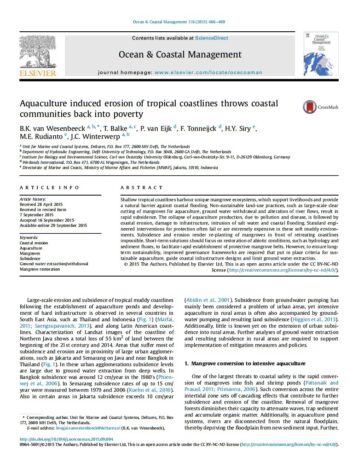
Aquaculture induced erosion of tropical coastlines throws coastal communities back into poverty
-
Aquaculture, fisheries and coastal agriculture
-
Coastal resilience
-
Coastal wetland conservation
Shallow tropical coastlines harbour unique mangrove ecosystems, which support livelihoods and provide a natural barrier against coastal flooding. Non-sustainable land-use practices, such as large-scale clear cutting of mangroves for aquaculture, ground water withdrawal and alteration of river flows, result in rapid subsidence. The collapse of aquaculture production, due to pollution and disease, is followed by coastal erosion, damage to infrastructure, intrusion of salt water and coastal flooding.
Standard engineered interventions for protection often fail or are extremely expensive in these soft muddy environments. Subsidence and erosion render re-planting of mangroves in front of retreating coastlines impossible. Short-term solutions should focus on restoration of abiotic conditions, such as hydrology and sediment fluxes, to facilitate rapid establishment of protective mangrove belts. However, to ensure long-term sustainability, improved governance frameworks are required that put in place criteria for sustainable aquaculture, guide coastal infrastructure designs and limit ground water extraction.

